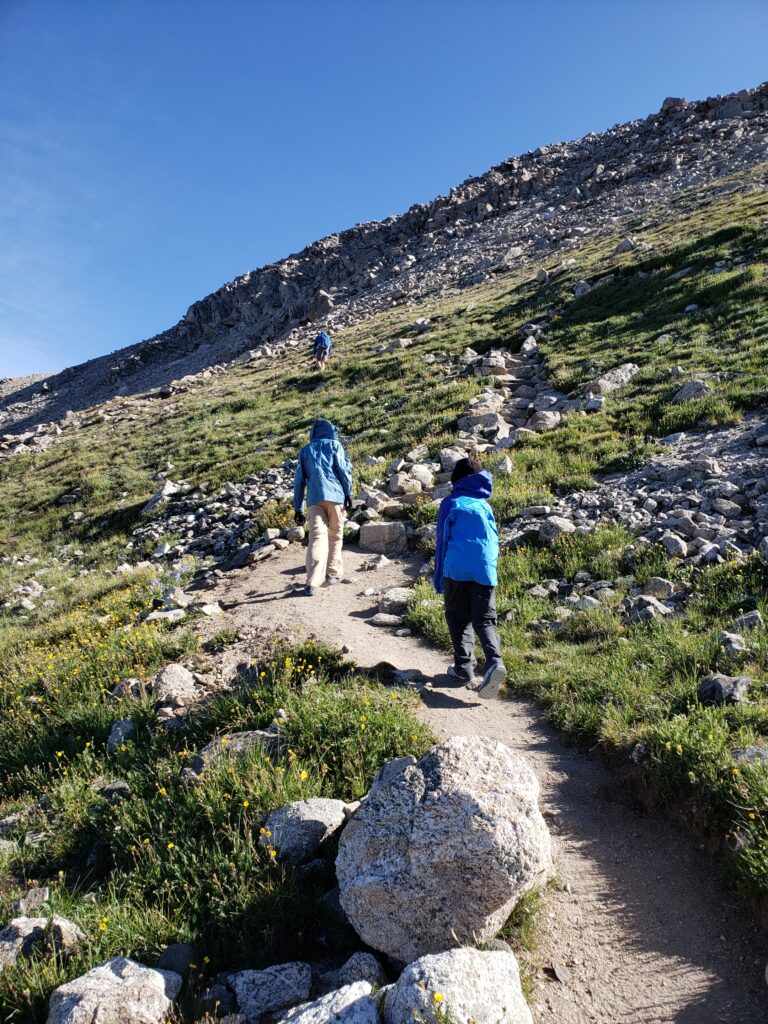
Hello hikers!
We are looking forward to a great weekend hiking Mt Yale. Here is some information to help you prepare for a high altitude adventure. We will be car camping, so remember to bring your sleeping bag, pillow, and sleeping pad. You’ll want a warm coat for camp, and we will grab some troop tents on Friday.
Meet at the barn at 5:00 pm so we can pack up and leave by 5:30 pm.
Here are a few tips to help you out…
A great app to use is 14ers.com and Hiking Project.
Altitude sickness is a real thing, even if you live in Colorado. Please be aware of the symptoms and communicate any you may experience along the way. Taking some Tylenol or Advil as you approach 10,000ft can prevent the not-so-fun altitude headache that can ruin your day. SEE BELOW FOR MORE DETAILED INFORMATION ON SYMPTOMS TO WATCH OUT FOR.
Drink extra WATER and hydrate this week, especially the day before the hike. This will help you on Saturday. Some people like hydration powders, but bring a separate bottle (i.e.12oz plastic water bottle) for this. The sweetness can make some people nauseated at high altitude, so it’s good to have plain water too.
Bring snacks that are both salty and sweet. A variety of lightweight, high-calorie options are great. Pepperoni or jerky, or sausage sticks taste great at the summit! So do cookies!
Pacing yourselves and taking short rests will help. Stopping for long periods of time is not recommended and can really slow your progress. Short, Frequent Breaks: Take 5-10 minute breaks every couple of hours to drink water, eat snacks, and check for any issues like hot spots on your feet. Use the Rest Step: On inclines, practice the rest step by momentarily supporting all your weight on one leg before bringing the other forward, allowing your muscles to relax with each step.
Here is a packing list to help guide you. We recommend going light but still being prepared.
RECOMMENDED PACKING LIST:
– Day pack
– Water (Nalgenes or Hydration Bladder) 2+ liters
– Light gloves
– Beanie/hat/buff
– Sunglasses
– Sunscreen (small bottle or squeeze some into a ziplock so you’re not carrying extra weight)
– Headlamp (Pro Tip – wear your headlamp around your waist. You won’t blast your friends in the face with a bright light when you are talking to them. It also makes it easier to see obstacles on the trail, like rocks and logs.
– Dress in layers (non-cotton, moisture-wicking base layers, insulating mid-layers, waterproof and windproof outer layers). Going up will be warm, but it can be cold and windy up high.
— T-shirt
— Long sleeve shirt/sun shirt
— Fleece jacket or light puffy jacket or sweatshirt
— Raincoat/windbreaker
– Good socks with no holes
– Study footwear…trail running shoes, hiking boots, or tennis shoes with good tread
– Hiking pants (NO BLUE JEANS)
– Trekking or ski pole (optional)
– A few Band-Aids
– – Duct Tape works great to prevent blisters, just don’t bring the whole roll. If you’re getting a hot spot, tell an adult so they can help you. Preventing blisters is important.
– Emergency blanket (if you have one)
– TP in a little ziplock or small Kleenex pack
– Cell phone & Ear Buds for music
** inReach Satellite Phone for Emergency Use (Mr. Anderson will have one)
HIGH ALTITUDE SICKNESS
Most people who get altitude sickness get AMS, acute mountain sickness. At higher than 10,000 feet, 75% of people will get mild symptoms. There are three categories of AMS:
Mild AMS: Symptoms, such as mild headache and fatigue, don’t interfere with your normal activity. Symptoms improve after a few days as your body acclimates. You can likely stay at your current elevation as your body adjusts.
Moderate AMS: Symptoms start to interfere with your activities. You may experience severe headache, nausea, and difficulty with coordination. You’ll need to descend to start to feel better.
Severe AMS: You may feel short of breath, even at rest. It can be difficult to walk. You need to descend immediately to a lower altitude and seek medical care.
Two severe forms of altitude illness occur less frequently but are more serious. Both can be life-threatening. You need to descend immediately and receive medical treatment for:
HAPE (High-altitude pulmonary edema): HAPE produces excess fluid on the lungs, causing breathlessness, even when resting. You feel very fatigued and weak and may feel like you’re suffocating.
HACE (High-altitude cerebral edema): HACE involves excess fluid on the brain, causing brain swelling. You may experience confusion, lack of coordination, and possibly violent behavior.
https://www.signupgenius.com/go/10C0F4FACAD2DA1FCCF8-57816080-mtyale





